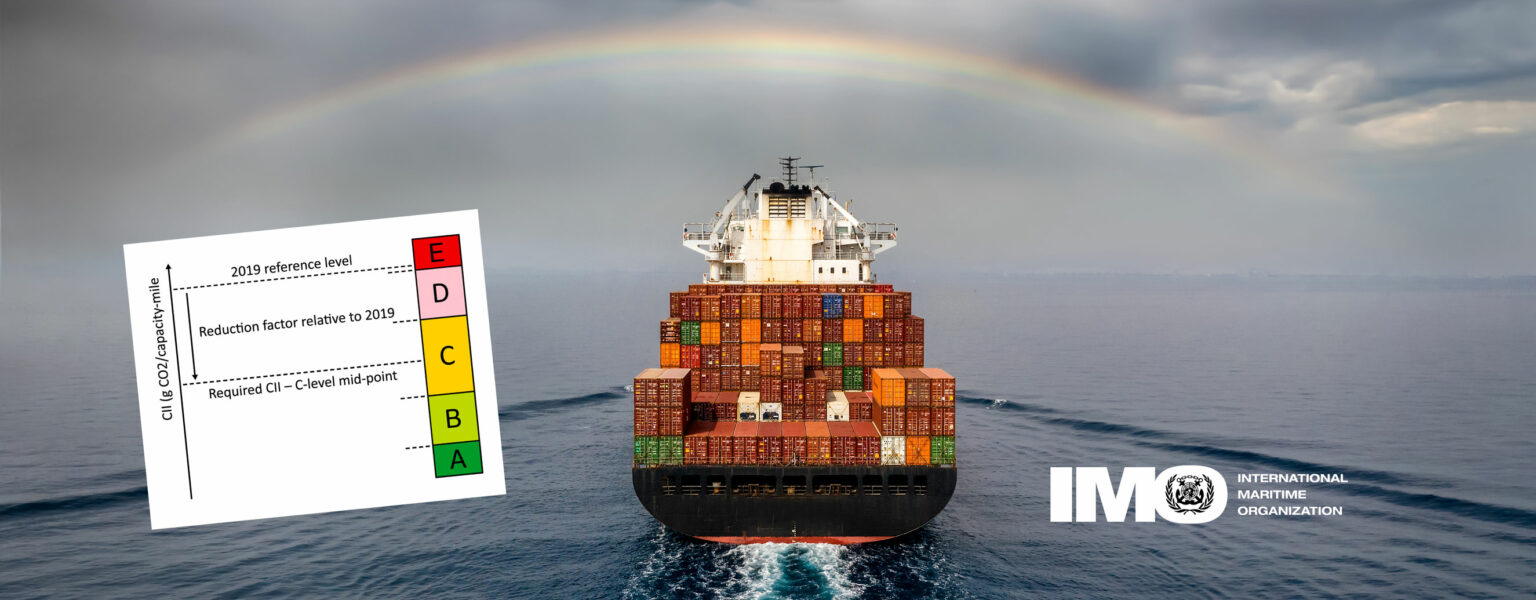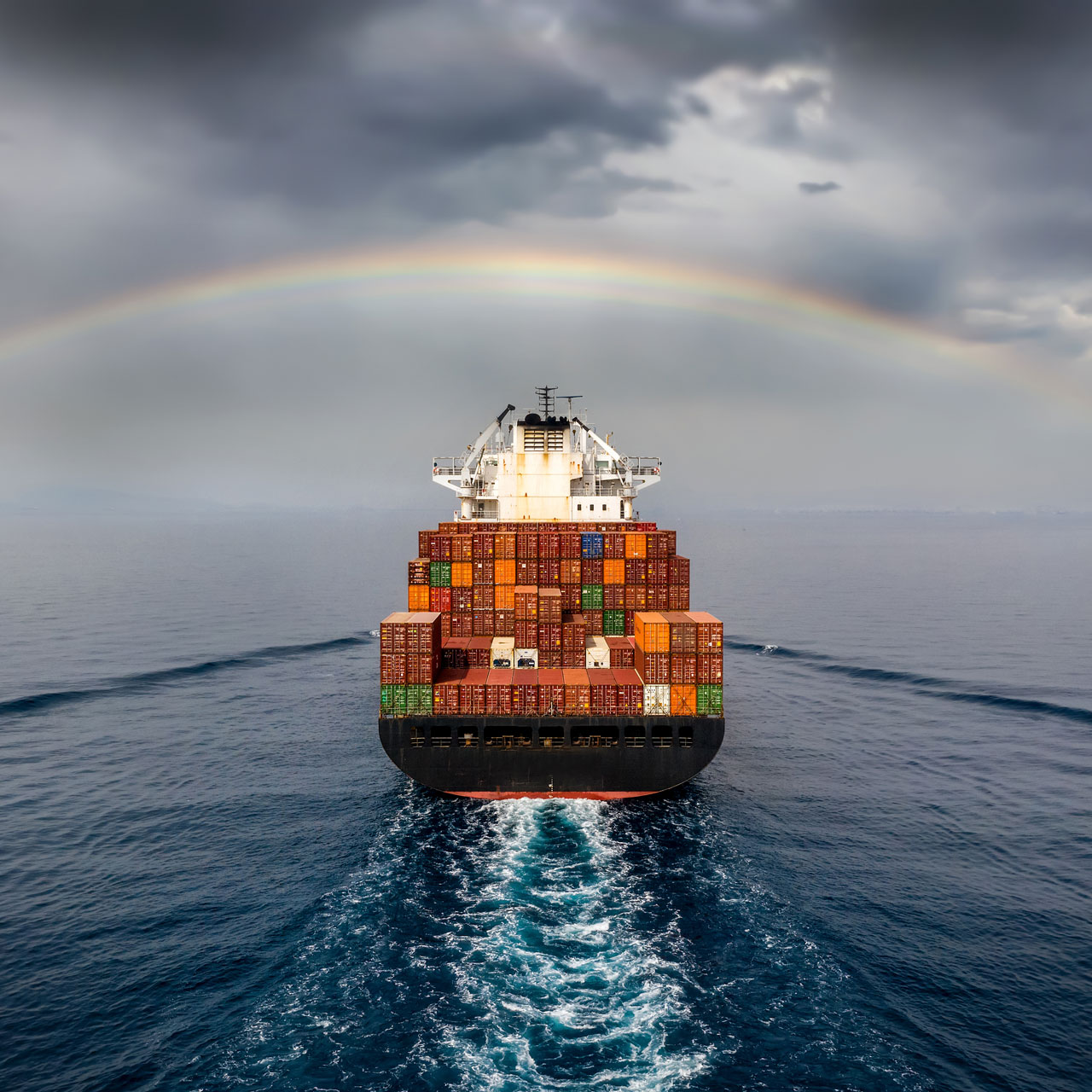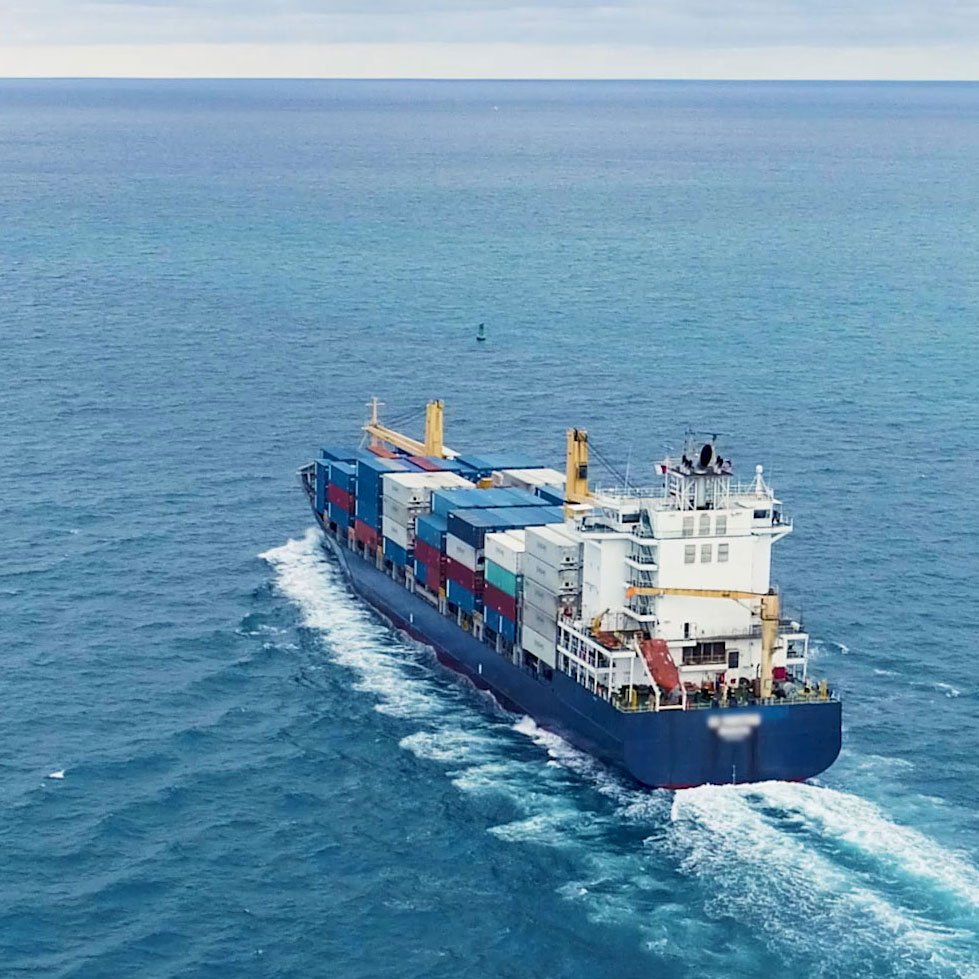The new IMO regulation on CII aims to improve the energy efficiency of ships worldwide. This is a summary on what the CII requirements are, how you can calculate the CII rating for your ships and what reporting you are required to complete.
The IMO regulations on CII came into force on 1 November 2022.
CII is a way to measure how efficiently a ship transports either goods or passengers. The goal of the regulation is to make ships more energy efficient and to decrease emissions of greenhouse gases from all vessels above 5,000 GT. By year 2030 the Carbon emission intensity shall be reduced by 40% compared to 2008.
CII ratings are based on gradually stricter requirements
Based on a ship’s carbon intensity it will be given a rating between A and E. E-rated ships are the worst emitters and A-rated ships are the best performers. For compliance, the ship needs at least a C-rating.
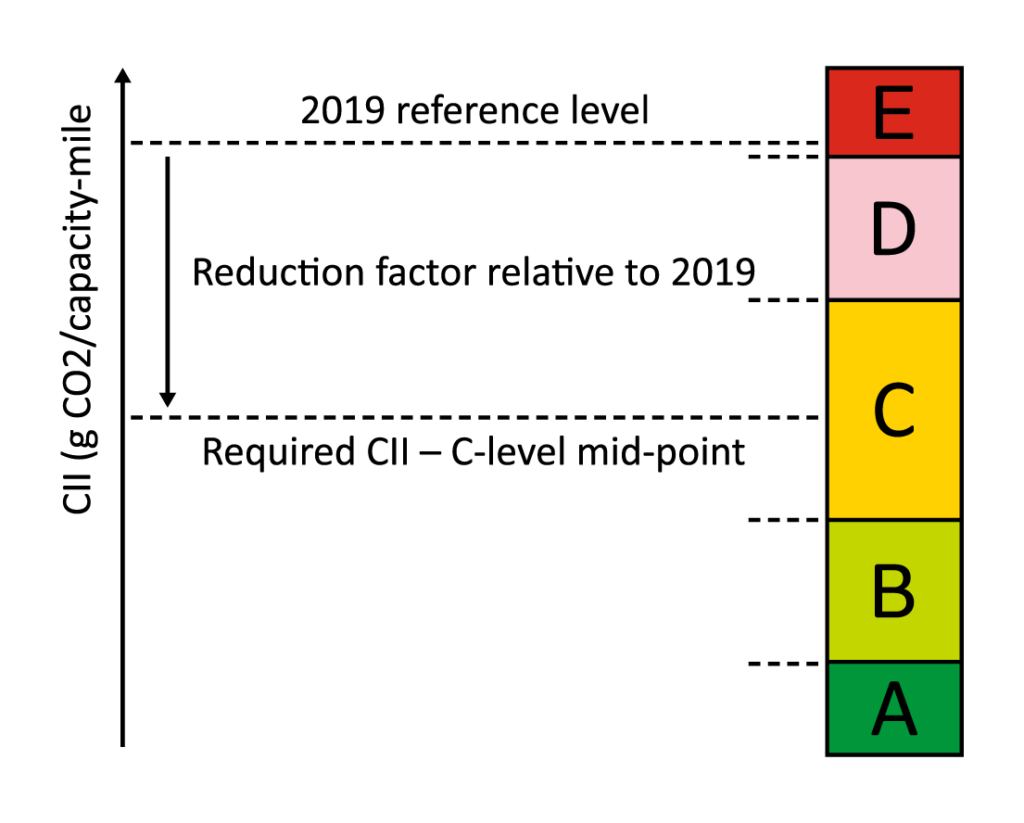
The requirements for maintaining a C-rating become stricter every year, as determined by a reduction factor that uses the reported carbon intensity from 2019 as a reference value.
| Year | Reduction factor (relative to 2019) |
| 2023 | 5% |
| 2024 | 7% |
| 2025 | 9% |
| 2026 | 11% |
| 2027 | TBD |
| 2028 | TBD |
| 2029 | TBD |
| 2030 | TBD |
The reduction factor for the years beyond 2026 will be decided based on results of an IMO’s review of the effects achieved up to 2025.
Ships that do not stay compliant will have to implement continuous improvements that enhance the ships’ energy efficiency. Most likely, a combination of measures will be needed to fulfil CII requirements.
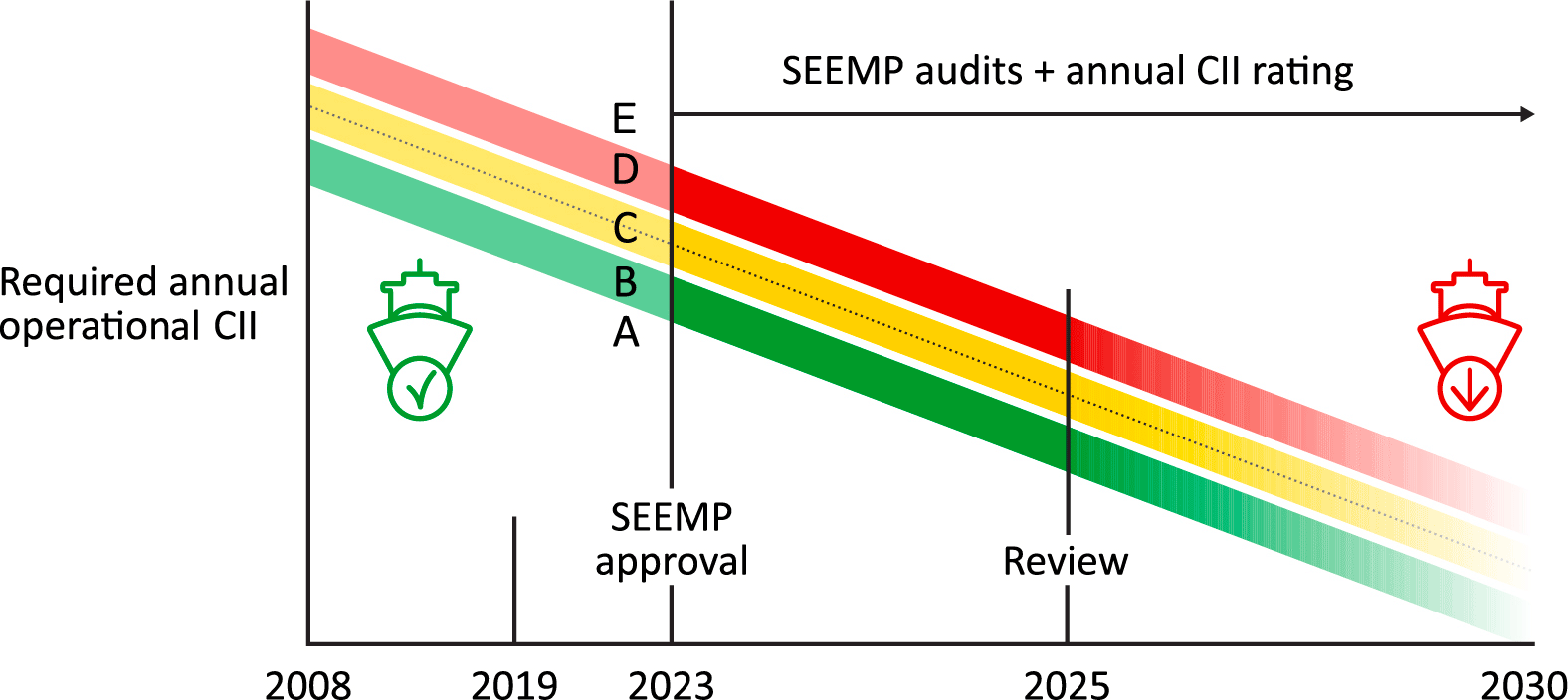
Calculating the CII rating of a ship
To determine the CII rating of a ship, you will need to make several calculations.
1. Calculate the Attained CII for a ship
Simplified, the attained CII for a ship is calculated as emissions of CO2 divided by transport work performed. To determine transport work, use deadweight for most cargo type ships and gross tonnage for passenger ships and ro-ro vehicle carriers.

The CO2 emissions are calculated by multiplying the annual fuel consumption with the CO2 emissions factor for that specific fuel type.
There are also several correction factors that can be applied to deduct fuel consumption related to electricity, heating, for ice-classed ships, structural enhancements etc.
For details, see IMO Guidelines on calculating Operational CII (Annex 10 to MEPC.366)
2. Calculate the Reference value for a ship
The reported carbon intensity performance of different ship types from 2019 is used to calculate your ship’s CII reference value.

a and c are parameters that are estimated through regressions fits. They can be found in table 1 of Guidelines on CII reference lines for different types of ships (Annex 11 to MEPC.366)
3. Calculate the Required CII for a ship

Z is the reduction factor valid for the year in questions and is specified in table 1 of Guidelines on determining the annual reduction factor (Annex 12 to MEPC.366)
4. Determine CII rating
Finally, divide the attained CII with the required CII.
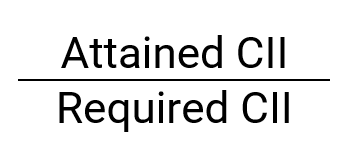
Compare this value with the boundaries in table 1 of Guidelines on determining CII rating (Annex 13 to MEPC.366) to determine the ship’s CII rating.
You now have the CII rating of your ship.
Required CII documentation and reporting
From January 2023 all ships will be required to submit an enhanced SEEMP (Ship Energy Management Plan) to the IMO and have the verified documentation placed onboard. The SEEMP part III must include the following information:
- A description of the method used to calculate the vessel’s Attained Annual Operational CII
- The vessel’s required Annual Operational CII for the next 3 years
- A plan describing how the required CII target will be achieved over the next 3 years
- A plan for continued self-evaluation and improvement
For 2023, you will need to collect data related to CII, to report fuel consumption data and Attained Operational CII no later than 31 March 2024. A Statement of Compliance (SoC) is to be issued no later than 31 May 2024, following a verification process that includes:
- Determining if the data on transport work and fuel consumption has been properly reported
- Verifying that the Annual Operational CII reported is based on the data submitted
- Determining the CII rating of the ship
The cycle then repeats every year.
Corrective actions for D and E rated ships
If a ship rates as D for three consecutive years, or as E for any single year, you are required to develop a corrective plan and include it in the SEEMP no later than 20 April the year after (in 2024 for ships that rate E for 2023 etc.). The corrective plan must be verified by a Recognized Organization, RO, (Classification society or Flag state) and implemented onboard. In the next reporting cycle, you must include reporting on conformance to the corrective action plan.
IMO review of the CII regulation
The IMO will review the CII regulation and possibly update the CII requirements by 1 January 2026 to assess:
- Effectiveness in reducing the carbon intensity of international shipping
- The need for reinforced corrective actions or remedies
- The need for enhanced enforcement mechanisms
- The need for enhanced data collection
- The need to revise the reduction factor or CII reference value

